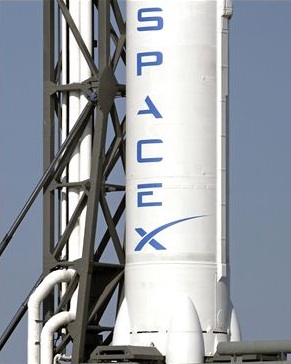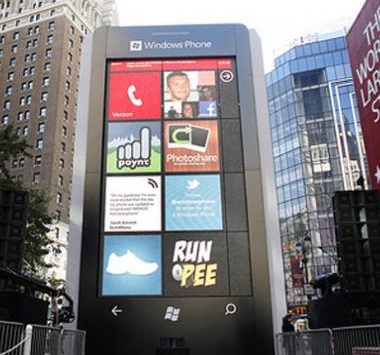Based in Atlanta, GA - Rick Limpert is an award-winning writer, a best-selling author, and a featured sports travel writer.
Named the No. 1 Sports Technology writer in the U.S. on Oct 1, 2014.
Entries in launch (4)
SpaceX Dragon Completes Key Tests as it Heads to Space Station
 Thursday, May 24, 2012 at 1:41PM
Thursday, May 24, 2012 at 1:41PM Today, Space Exploration Technologies' (SpaceX) Dragon spacecraft completed key on-orbit tests as part of a historic attempt to be the first commercial company in history to send a spacecraft to the International Space Station.
In the days since SpaceX's Dragon spacecraft successfully launched from Cape Canaveral, Florida, the vehicle has steadily completed one task after another as it prepares to berth with the International Space Station. Only minutes after the spacecraft separated from the Falcon 9 rocket's second stage, its solar arrays successfully deployed, providing power to the spacecraft. The door that had been covering sensors needed for proximity operations opened successfully.
On Tuesday and Wednesday Dragon traveled in orbit, firing its thrusters to catch up to the space station. During that time, the vehicle hit a series of milestones. Dragon showed its Absolute Global Positioning System (GPS) is in good working order. The vehicle demonstrated both a pulsed and a full abort. It also demonstrated free drift, floating freely in orbit as it will when grappled by the space station's robotic arm. And its proximity operations sensors and SpaceX's COTS UHF Communication Unit (CUCU) are up and running.
Early this morning, Dragon's thrusters fired, bringing the vehicle 2.4 kilometers below the International Space Station. The vehicle completed two key tests at that distance. Dragon demonstrated its Relative GPS and established a communications link with the International Space Station using CUCU. Astronauts commanded on Dragon's strobe light to confirm the link worked. A video of Dragon as seen by the space station is available at http://www.nasa.gov/multimedia/videogallery/index.html?media_id=144472261
With these tests complete, Dragon has started the trip flying around the space station, returning the spacecraft to its original approach location.
Dragon has been performing well, but the most difficult aspects of the mission are still ahead.
FRIDAY MORNING - Final Approach, Dragon Grapple
Around 2:00 AM Pacific/5:00 AM Eastern NASA will decide if Dragon is GO to move into the approach ellipsoid 1.4 kilometers around the space station. If Dragon is GO, after approximately one hour Dragon will move to a location 250 meters directly below the station. Dragon will then perform a series of maneuvers to show systems are operating as expected. If NASA is satisfied with the results of these many tests, Dragon will be allowed to perform the final approach to the space station.
Sometime around 6:00 AM Pacific/9:00 AM Eastern, astronauts on the space station will grapple Dragon with the space station's robotic arm and the spacecraft will attach to the station.
SATURDAY MORNING - Hatch Opening
If all goes well, at approximately 2:00 AM Pacific/5:00 AM Eastern, the crew will start procedures to open Dragon's hatch. It will take around 2 hours to complete all operations leading to the hatch opening. Once the hatch is opened, astronauts will enter Dragon for the first time in space.
All dates and times are approximate and could easily change.

 NASA,
NASA,  Space Station,
Space Station,  SpaceX Dragon,
SpaceX Dragon,  launch,
launch,  tests in
tests in  Aviation,
Aviation,  Events,
Events,  Internet,
Internet,  News,
News,  schedule
schedule Lego Man in Space
 Sunday, January 29, 2012 at 9:14AM
Sunday, January 29, 2012 at 9:14AM I love this story.
Two Toronto teenagers earlier this month when Mathew Ho and Asad Muhammad sent a Lego-manned flight capsule into space.
The two 17-year-old Agincourt Collegiate Institute students completed their year-long mission two weeks ago, successfully sending a balloon carrying a Lego man and a small Canadian flag out of earth's atmosphere.
The unit was launched from a park near Ho's east-end home and ascended 80,000 feet before the balloon popped. The Lego man and his cargo fell safely to earth, with the help of a homemade parachute, where it landed in a Peterborough field.
The whole mission was captured by four cameras on board the shuttle and tracked by the GPS inside a phone. The astonishing photographs showed the Lego man hovering well above earth and captured glorious views of our planet from space.
The space mission began more than a year ago but work really got underway when Ho and Muhammad started drawing up plans in September, working during the weekends to sew together the parachute, perfect the flight pod and iron out all the problems that come with launching an object into space.
The pair, who first met in middle school, saw a similar project done by a group of IT students and figured they could do it themselves.
"Almost to prove to ourselves and prove to everyone else that we could do it," Ho told The Toronto Star.
"I knew I wanted to do something like this but I couldn't do it alone," added Muhammad.
"Once we started doing it, I really wanted to retrieve it back because I wanted to show everyone that we could do it."
Ho has applied to Canadian universities with the intention of pursuing a commerce degree. Muhammad has applied to several engineering programs.
Microsoft Erects Giant Windows Phone in New York
 Monday, November 7, 2011 at 7:30PM
Monday, November 7, 2011 at 7:30PM 
To celebrate its continued momentum and the launch of the new phones, “We’re taking the trends to bigger screens to the next level,” Lees said, noting that in Herald Square, Microsoft had constructed a 55-foot replica of a Windows Phone with “live” applications and music. “With Live Tiles we don’t give you an icon to play music; we show you the band,” he said, adding that hot electro hip-hop group Far East Movement would be playing in one of the tiles of the Windows Phone replica.
 New York,
New York,  Samsung,
Samsung,  Windows Phone 7,
Windows Phone 7,  giant,
giant,  launch in
launch in  Events,
Events,  Gadgets,
Gadgets,  New York,
New York,  Telephones
Telephones 

